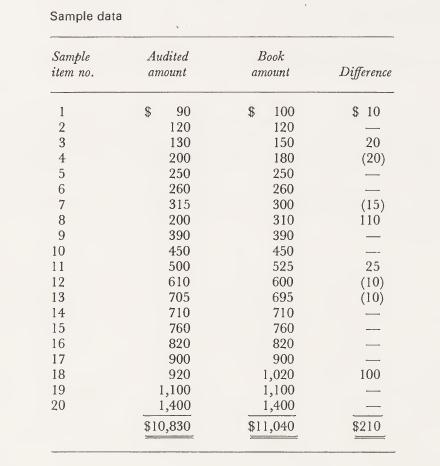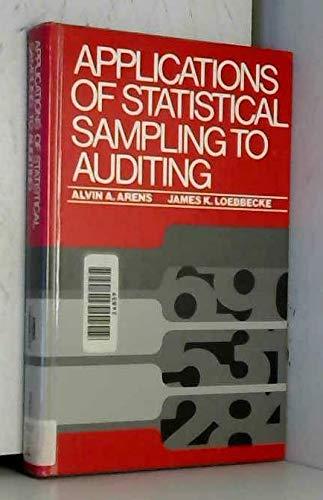The data from problem 7-17 are used in this problem to make calculations in part a. All
Question:
The data from problem 7-17 are used in this problem to make calculations in part a. All inventory items valued at more than \($700\) are considered a part of stratum 1. All those valued at \($700\) or less are considered a part of stratum 2, which includes 640 population items with a recorded value of \($170,000\). Even though only 20 items in total are used to simplify the problem, compute sampling results as indicated.
Required :
a. Calculate each of the following. (Where a blank should not be completed because it is inappropriate to do so, indicate by NA.)

b. Compare the stratified mean-per-unit results to the unstratified mean-per- unit results in problem 7-17. Explain why the overall point estimate is similar in size and the precision interval is so different.
c. Compare the stratified difference results to the unstratified difference results in problem 7-17. Explain why there is so little difference in the point estimate and precision interval.
Problem 7-17:
The following is a set of sample and related data taken from a population of 1,000 items that have a recorded book value of \($498,000\). Even though only 20 items are used to simplify the problem, compute the sampling results as indicated.

Step by Step Answer:

Applications Of Statistical Sampling To Auditing
ISBN: 9780130391568
1st Edition
Authors: Alvin A. Arens, James K. Loebbecke





